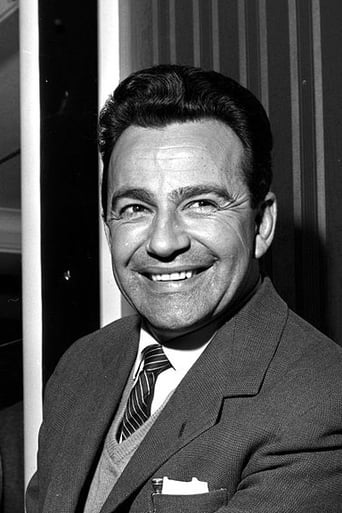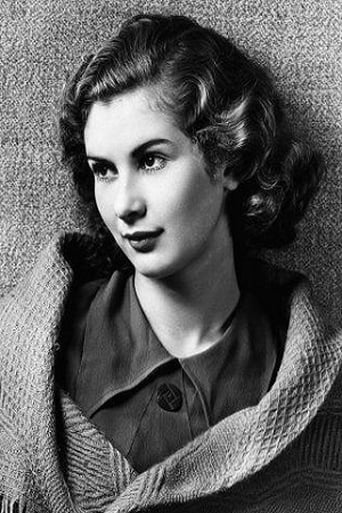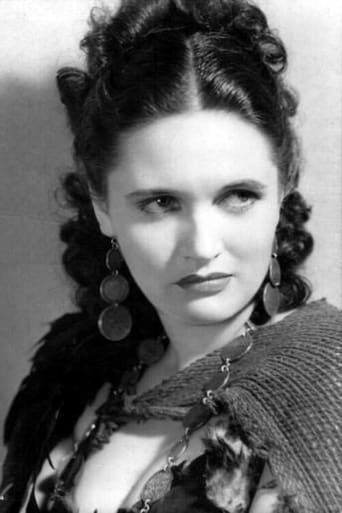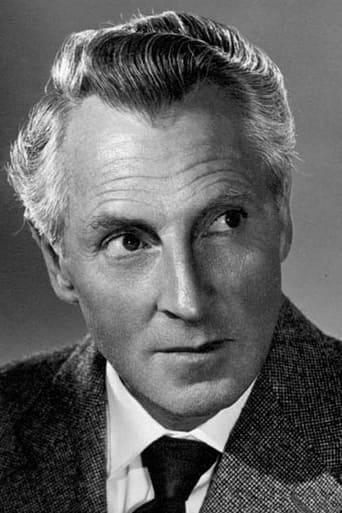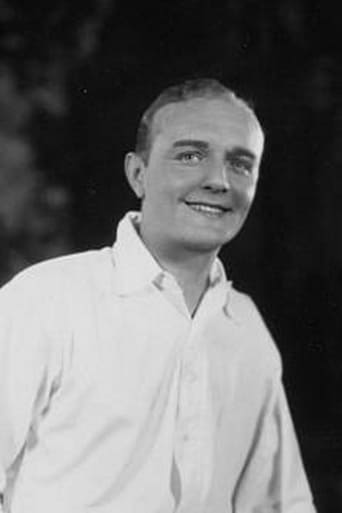Cebalord
Very best movie i ever watch
Moustroll
Good movie but grossly overrated
ActuallyGlimmer
The best films of this genre always show a path and provide a takeaway for being a better person.
Gary
The movie's not perfect, but it sticks the landing of its message. It was engaging - thrilling at times - and I personally thought it was a great time.
Leofwine_draca
CALLING PAUL TEMPLE is the second of four feature films starring radio detective Paul Temple, who along with his sidekick Steve (a woman) investigates various murders and crimes at the behest of Scotland Yard. This follows on from the sub-standard debut feature SEND FOR PAUL TEMPLE and was followed by the rarely-seen PAUL TEMPLE'S TRIUMPH.The story is a straightforward one of murder and intrigue as Temple and Steve find themselves hot on the trail of a murderer by the name of Rex. Rex specialises in bumping people off at random, often when they're just about to reveal his identity; shades of THE 39 STEPS with the Mr. Memory assassination. Still, this is a well-paced and enjoyable little affair, with plenty of red herrings and suspense to recommend it.It's not a perfect film by any means. Just after the arresting opening, things slow down for an endless nightclub song routine which seems to go on for about twenty minutes. Afterwards the plotting is a little crammed due to this endless filler material. Still, John Bentley and Dinah Sheridan have plenty of chemistry as the crime-fighting duo, and fans will find this reasonably entertaining.
wilvram
Once again, the assistance of crime novelist Paul Temple, recently married to 'Steve' Trent is required by Scotland Yard. They're baffled by a particularly repulsive character signing himself 'Rex' who blackmails women then murders them.This scores over the other two films in the series I've seen, SEND FOR PAUL TEMPLE and PAUL TEMPLE RETURNS, not least for the enjoyable performances of John Bentley and Dinah Sheridan who were ideal as Paul and Steve; there's a real chemistry and sense of fun and romance between them. Bentley was very much at home in this kind of role, evoking that air of cheerful authority that Roger Moore was later able to bring to his portrayal of The Saint and interpretation of James Bond. Exquisitely beautiful Dinah Sheridan lights up the screen in a sparkling performance with her diverting, amusing repartee with Paul and benefits from a script that gives Steve an equal role in tracking down the killer, discovering several vital clues. By comparison, in the BBC TV Paul Temple series, made at the turn of the 1970s, Steve had little to do, with the producers considering writing her out altogether at one point. It all gets off to a flying start with Celia Lipton - whatever happened to her? - as the nightclub vocalist, de rigueur in this kind of British B, falling dramatically down the stairs in the middle of her second number, Steve Race's "What's Cooking in Cabaret?". I've seen acts die before, but not like this. From then on there's red herrings galore as suspicion falls on most of the characters in turn, played by some admirable actors including Abraham Sofaer as a therapist, his mysterious secretary Mrs. Trevelyan (Margaretta Scott) and salesman Hugh Pryse, who could almost be a younger, Welsh, relation of Alastair Sim. Good old Wally Patch is Temple's underworld grass Spider Williams; he also supported Bentley in the two films featuring John Creasey's hero The Toff, both also directed by Maclean Rogers and now apparently lost. There's time for some fascinating glimpses of Canterbury as it was then, and for Paul and Steve to be tied up in a cellar with the water rising remorselessly. Then the time-honoured denouement with all the suspects gathered together in one room and finally an almighty punch-up between Temple and the villain, to a reprise of the melodramatic title music. Great escapist fun 1940s style.
malcolmgsw
This adaptation of a BBC radio series soon betrays its origins.There are a number of mini climaxes,which would normally be where the programme would stop awaiting the unfolding of the latest quirk in the story the following week.However here we have the laboured device of a number of characters about to divulge the name of the murderer Rex when all of a sudden they are shot or poisoned.The problem is also that so many characters are murdered that it all becomes rather commonplace and clichéd.The film is not helped by the fact that there is a nightclub scene shortly after the beginning which seems to bring the whole plot grinding to a halt till Celia Lipton has trilled a couple of songs and expired.By the way the murderer is not too difficult to guess if you know what British actors tended to play villains.This film was clearly intended to play as a first feature but i have to say that the majority of British B crime films are far more entertaining than this woeful effort.
robert-temple-1
This is a moderately entertaining, if rather insipid, film based on the BBC radio series written by Francis Durbridge, with Paul Temple, the writer of detective novels, acting as a detective himself. Here he is played by John Bentley, the first of his three films as Paul Temple. He is a very personable and adequate actor for the role. His wife 'Steve Temple' is played in lively fashion by Dinah Sheridan. She looks so eerily like the contemporary British actress Rosamund Pike that I kept imagining I was watching Pike in the role. A true mystery would run something like this: could they possibly be related? Both were born in London. Oh well, probably not, but it is just uncanny, that's all: a case for Paul Temple. And as all writers named Temple know, solving mysteries can be a lot of fun. The credited continuity girl for this film was June Faithful, although it does not appear in her list of credits on IMDb. I knew her much later in her career, and have absolutely no idea whether she is alive or not, for that is not recorded on IMDb either. This was probably her first continuity job. The cinematographer for the film was Geoffrey Faithful (and in his case, it does appear on his lengthy list of credits on IMDb; he died 1979, aged 86), who shot VILLAGE OF THE DAMNED (1960), MURDER SHE SAID (1961), and countless other films between 1913 and 1971, when he retired. He was probably June's father, and may have got her into the job on this first picture. This film is notable for containing much excellent location cinematography of the town of Canterbury as it was in 1947, with streets nearly empty of traffic, and before the town was largely ruined by tourism, chain stores, and rampant commerce. Much of the action is set there. A lot of the cinematography is atmospheric, commencing with the opening sequence inside the corridor of a moving train at night. If only the story and the direction had been better, this film could be something of a classic, but alas, it is not. A series of murders of women are taking place, and various sinister characters are 'set up' for us as either the real culprit or as red herrings, one of them played by the remarkable Burmese-Jewish actor Abraham Sofaer, who never failed in many a film to deliver an impeccably chilling rendition of a potential villain, aided by his weird looks. Another possible villain of the piece is ominously played by Hugh Pryse, who does a really good job of it indeed. Pryse died at the age of only 44 in 1955, only seven years after this film. He should have gone on to enjoy a distinguished career as an older character actor, for which he was eminently suited. Who is really killing all these women? They all turn out to be patients of Abraham Sofaer. Well, you can imagine the rest, but I shall not tell whodunit because that would be telling whodunit.
